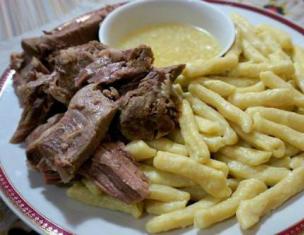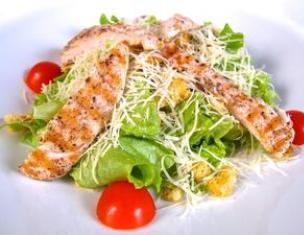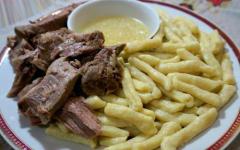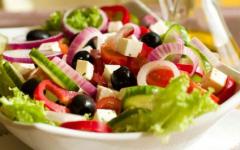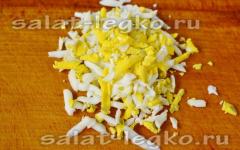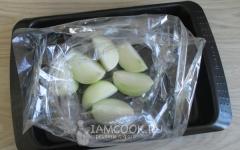Barberry is a unique plant that is famous not only for its aroma, but also for its beneficial properties.
Barberry berries are a storehouse of vitamin C, ascorbic, malic and citric acid. Therefore, consuming barberry-based products will help relieve fever and stop bleeding.
If you have liver, bladder, or kidney disease, then under no circumstances neglect this berry, which is so important to you.
Barberry is widely used in cooking. Its fruits are used to make jams, jams, syrups, and various sauces for meat dishes.
For evening tea, you can prepare your own aromatic tea from barberry fruits, which will not only saturate you with vitamins and nutrients, but will also have a preventive effect against various diseases. Moreover, you won't need a lot of time and effort. Just pour boiling water over the fruits and let it brew for half an hour. Tea is ready.
And to make drinking it tastier, let's make barberry jam. In terms of taste, it will surpass even feijoa jam.
Barberry jam - recipe
To make jam you will need:
one kilogram of barberry berries,
one kilogram of sugar,
six glasses of water.
First, wash and peel the barberry berries from the grains. Fill with cold water and leave for six hours.
While the berries are soaking, prepare a syrup from the specified amount of sugar and water.
After six hours, pour the prepared syrup over the barberries and cook over low heat until they become soft.
There is another way to make jam. To do this, put the berries in a jar and fill with boiled cooled syrup. Insist for 24 hours.
For the next ones, drain the syrup and boil it. After cooling, pour it back into the jar with barberry and leave for another day.
On the third day, drain the syrup and place the berries in a bowl. Place it on low heat and cook until the barberry is completely cooked.
The most fragrant and very healthy barberry jam is ready. It has a pleasant sweet and sour taste and is not at all cloying.
What could better brighten up cold winter evenings than a cup of tea with delicious jam?
Treat your loved ones to cherry jam! Preparing this sweet preparation will not take you much time. But how much joy this dessert will bring to both adults and children.
In addition to its unique taste, this jam is also very healthy. The main thing is not to get carried away.
Cherry jam: homemade recipe
You will need:
kilogram of ripe cherries,
kilogram of sugar
one and a half glasses of water,
a glass of walnuts,
a quarter teaspoon of vanilla.
Wash the cherries thoroughly and remove the pits. If possible, avoid using special devices designed to remove seeds, otherwise the berries will lose their attractive appearance.
Cut the walnuts with a knife into small pieces no larger than a cherry pit.
Stuff the berries with the prepared chopped nuts and set aside.
Now you can start preparing the sugar syrup. To do this, add water to the sugar and put it on fire. Bring the mixture to a boil while stirring constantly and remove from heat. Then pour the cherries so that the resulting syrup completely covers them.
Let the fruits steep in the syrup for about three hours, then simmer over low heat until the berries are transparent. Make sure that the syrup does not boil, otherwise the cherries will not remain intact.
A few minutes before the end of the cooking process, add lemon juice to the cherry jam. If you want the finished fruits to have a subtle sweetish flavor, add a little vanilla five minutes before removing from heat.
The prepared jam must be poured into pre-prepared sterilized jars and sealed securely.
The especially bright taste of the berries appears two months after cooking, so it is especially important to let the jam brew well. At the end of autumn - beginning of winter, you will be able to fully appreciate the taste of this delicate berry preparation.
Preface
If you have tried Barberry lollipops with a slight sourness, this does not mean that you know the taste of the fruits of the plant of the same name; barberry jam always has an exquisite bouquet of aroma and taste, and also retains certain beneficial properties of the berries. Let's find out how to prepare this delicious dessert for the winter.
Sometimes the simpler the cooking method, the better the preservation turns out, and this is not surprising - after all, there is practically no chance of error. Therefore, we will start with the classics, and our first recipe will not require anything from you except barberries, sugar and water. You will need 1 kilogram of the main component, that is, the fruit, but this amount can be increased arbitrarily, in proportion to the other components. For the specified amount of washed selected berries, take 6 cups of granulated sugar and 2 cups of water. Place the barberry in a saucepan, draw cold water from the tap and wait 7–8 hours. This is necessary so that the slightly dry berries soften, absorbing moisture.
Attention! To preserve the maximum manifestation of its beneficial properties, take.
Collection of barberry fruits
Next, put the fruits in a colander, empty the pan and pour sugar into it, adding the required amount of water, and put it on low heat. After boiling, you need to wait 5-10 minutes to get a thick sugar syrup. Now place the berries in a bowl and add gas slightly. When cooking, do not forget about constant stirring, this is very important, since burnt fruits saturate the preparation with carcinogens. The readiness of the product can be judged by its increased transparency. In this case, the barberry, which initially floated in the liquid, gradually sinks to the bottom, which is why it is necessary to stir the grounds more often with a long spoon. Next, all that remains is to sterilize the jars, pour barberry jam into them and seal them tightly with lids. Cool under a blanket, wiping off any syrup drips.
A similar recipe promises even more sweetness to the dessert; for each kilogram of fruit you will need about 2 kilograms of granulated sugar; you can slightly reduce the amount to save, but only up to 1.6 kilograms. The berries need to be washed and then separated from spoiled and damaged ones. Mix sugar with water in a ratio of 7:3 and cook a thick syrup, into which we then place the barberries, and after a couple of minutes of boiling, remove the dishes from the stove. Cover the container with gauze and leave for 10 hours. Next, put it on low heat again and, after boiling, cook until the liquid clears and the fruit is translucent. A drop of syrup on the saucer should not spread - this is the main sign that the jam is ready. Fill sterilized jars and close for the winter.
The third recipe is not too quick, but also quite simple. First, we sort out the barberries and wash them thoroughly, after which we fill them with granulated sugar at the rate of 500 grams for each kilogram of berries. We leave the fruits in a cool place at least 20 degrees for a day, during which time they will release juice, which will then need to be drained and used separately, as a product that has retained the beneficial properties of the berries. Then we make syrup, for which we take 850 milliliters of water and 1 kilo of granulated sugar for each kilogram of barberry. When you get a homogeneous thick liquid, add the berries to it and wait another 4 hours. Cover with a lid and put on high heat, cook until foam forms on the surface (look often and stir), which needs to be removed, then reduce the gas to low. Cook until the droplets begin to hold their shape on the saucer, add another 400 grams of sugar and cook for 10 minutes, after which we roll them up for the winter.
Due to the high pectin content in the peel of these berries, you can make excellent jelly or even marmalade from them, which have certain beneficial properties. This dessert is much better than jam and is convenient not only for tea parties, but also as a filling for pies. First, let's start preparing the jelly, especially since the recipe is quite simple. You need to take about 1.5 kilograms of barberry, wash and remove the seeds, and then put it in a pan and fill it with water so that it completely covers the berries. Place on the stove and cook until the fruits become soft. We take a sieve (preferably as fine as possible) and grind the pulp, discarding the peel onto the barberry compote.
Add 1.5 kilograms of granulated sugar per 1 kilogram of mass, pour in the partially boiled broth and put it on the fire again. There is no need for water, there is enough juice in the resulting puree. When boiling begins and syrup forms, turn up the gas as much as possible so that it burns gently and cook, stirring constantly, until the total volume of the mass decreases by 3 times. We sterilize the glass containers in advance and fill the jars with a thick mixture right up to the rims of the necks. Then we boil the lids and roll up the preserves, after which, turning them upside down, we put them under the blanket to cool. Keep in mind that the longer you cook the jam, the less the beneficial properties of the fruit are retained.

Making barberry jam
It is cooked in the same way, but there are slight differences. At first, the recipe is almost the same - you need to wash and sort the fruits, remove the seeds and grind. But further... For every kilogram of puree we add 350 grams of granulated sugar, and do not pour in the broth water at all. Place on low heat and simmer for approximately 60-70 minutes, stirring constantly and weighing the container with the product from time to time (it is recommended to weigh the empty container first). As soon as the total weight of the jam approaches 700 grams, that is, it becomes only 2 times more than the granulated sugar used, turn off the heat and pour the mass into small jars. As it cools, the preservation will finally thicken and turn into marmalade.
There is another option, and as an intermediate by-product you will get pure barberry juice, which can be used to prepare compotes or fruit drinks, not to mention jelly. And, most importantly, this product will have all the beneficial properties of berries. Primary operations are again as in the first recipe, that is, washing the fruits and removing seeds from them. Next, place the berries in water and cook until softened. But then the pulp needs to be carefully squeezed out, for which a press or, in the absence of one, a gauze bag is used. The cake can be used for the same compote or jelly. And add granulated sugar to the juice in a 1:1 ratio and put it on fire. Cook for approximately 1 hour to reduce the volume of liquid. Next you will get jelly or pure marmalade, depending on how early you remove the dishes from the stove.
Preservations with additional components
First, let's look at a recipe for making jam, in which the second part of the preparation, in addition to barberries, will be apples, thus we will combine the beneficial properties of two different crops. So, we take 0.5 kilos of both components, as well as about 350 grams of granulated sugar (you can proportionally increase the amount of all components). We sort out the berries and wash those that have passed the inspection in running water, after which we remove the seeds from them. Apples should also be selected without defects, washed and cut into thin slices. Place both components in a deep enamel pan or large basin, add a little water (1 glass, maybe 1.5) and add sugar.
Place on low heat and cook until the drop that falls on the saucer holds its shape well. Immediately transfer to sterilized jars and roll up, after which we put them under a blanket to cool. Confiture can be prepared in a similar way; it requires the same amount of sugar per 250 grams of berries. You will also need 2 apples. We turn the barberry into puree in a blender or in a meat grinder, then squeeze out the juice, and put the cake aside for compote. Add finely chopped apples and sugar to the juice, put on fire and cook until thick, about 1 hour. We close the finished product in glass jars and, after cooling, put it in the cellar for the winter.
The next recipe is barberry jam, which is called “Ascorbinka”, which means that it will have a slight sourness and will retain all the beneficial properties of the berries. This preservation is prepared without heat treatment. We take enough berries to fit into all the prepared jars, using one of them as a measure. You will also need 1 lemon. The fruits need to be washed, then their seeds removed and passed through a blender or, in extreme cases, through a meat grinder. The resulting mass is thoroughly mixed with granulated sugar, of which you will need 0.5 kilos for each jar. In essence, after this the product can already be consumed, or, sealed in a glass container, put in the refrigerator for the winter.
Another of our recipes is barberry jam with vanilla. We select ripe fruits, remove green ones along with spoiled ones. For each glass of berries you will need 150 milliliters of water and 1.5 cups of granulated sugar, which are mixed and heated on the stove until a syrup is formed, into which the fruits are then dipped. We wait a day, then put it on the stove and bring to a boil, cook for 30 minutes and remove from heat. Let it cool, then turn it back on the gas and cook for another half hour. Now is the time to put 5 grams of vanillin on the specified amount of food and keep it on the fire for another 2-3 minutes. The finished jam should be poured into pre-sterilized jars while hot. Use metal lids, dipping them in boiling water before screwing them on.
Barberry berries can be called universal, as they are suitable not only for making desserts, but are also often used as an aromatic seasoning for a wide variety of dishes. But that's not all! The fruits of this plant have powerful healing properties, and therefore are quite actively used in folk medicine. Today we will talk about barberry jam. What options are there for preparing it and how healthy is this delicacy? Let's find out!
About the benefits
The small bright red fruits contain valuable amino acids, including tartaric, lemon and apple amino acids, as well as vitamins A and C. In addition, they are rich in pectins, sugars and mineral salts. Thanks to this set, jam and other barberry dishes have special beneficial properties:
- tone the intestines;
- exhibit a diuretic and choleretic effect;
- improve appetite;
- calm the nervous system;
- relieve inflammatory processes;
- improve blood circulation;
- are used as antipyretics.
Plus, barberry berries contain pectins, which help remove toxins, heavy metal salts and other harmful compounds. With their help, you can strengthen the heart muscle and gently cleanse the intestines during constipation.
Berry to berry...
In fact, there is nothing complicated in recipes for making barberry jam. All ingredients are quite accessible and simple. The only thing I want to focus on is the degree of ripeness of the berries themselves. To make jam, it is recommended to pick fruits that are not fully ripe, since ripe ones will be very soft and will quickly lose their shape when cooked.
Important! Green barberry is not eaten either fresh or after heat treatment. Such berries contain toxic substances that completely decompose after ripening!
The fruits are harvested as they ripen - often in the summer, but those that were collected after the first frost are characterized by the best taste. These are exactly the ones that are best suited for making barberry jam for the winter.
On a note! If you sprinkle the berries with sugar and put them in the freezer, you can use them throughout the year, for example, for making compotes, fruit drinks, liqueurs and other drinks!
Best Recipes
Does barberry grow on your property? Then be sure to make jam from it according to one of the following recipes! Any of the proposed desserts will be very tasty, aromatic and incredibly healthy.
Classic recipe
For traditional barberry jam, you will need a kilo of freshly picked fruits, half a liter of water and 2 kilos of granulated sugar. Let's get started:
- We transfer the washed and dried berries to a large container;
- add half a kilo of sugar and leave everything at room temperature for a day;
- during this time, the fruits will give juice, which must be drained;
Advice! It is advisable not to throw away the resulting barberry juice, but to preserve it. This way you will get another natural “medicine” that will help strengthen your immune system during the cold season!
- pour the amount of water specified in the recipe into the pan, add a kilo of sugar and cook the syrup;
- Pour the barberry with the resulting syrup and leave the mixture for another 4 hours;
- Place the berries in the syrup on the fire, cover with a lid and bring to a boil with high gas supply;
- after that, reduce the heat and cook our future jam with constant stirring, collect the foam;
- After about 20 minutes, add the remaining portion of sugar, mix and cook for another 10 minutes;
- Place the hot dessert in pre-sterilized jars and seal immediately.
Raw barberry jam
Among most housewives, two recipes for barberry jam without cooking are especially popular. The first contains only berries and sugar, the second, in addition to these ingredients, also adds lemon.- Barberries with sugar: thoroughly wash the fruits in several waters and pass through a meat grinder. For every kilogram of berry mass, add two kilograms of sugar and mix thoroughly with a wooden spatula - the sugar should completely dissolve. Pour the finished jam into clean jars, cover with nylon lids and store in the refrigerator or cellar.
- Barberry with sugar and lemon: wash the berries (as much as will fit in a liter jar), dry them, remove the seeds if desired and grind them using a meat grinder or blender. We cut off the “tails” of two lemons, randomly cut them into slices, remove the seeds and also chop them. Combine the berry mass with the fruit mass and add 1.5 kg of sugar. Stir until the latter is completely dispersed. Place the finished dessert into jars and cover with plastic lids. Store in the cold.
On a note! This jam is called “Ascorbinka”, since thanks to barberry and lemon it contains a huge portion of vitamin C!
With apples
In order to make jam from apples with barberries, you should prepare a kilo of apples, preferably sour varieties, the same amount of berries and about 0.7 kg of sugar.
- First we deal with the berries - wash them and remove the seeds;
- move on to the apples - also wash thoroughly, remove seeds and cut into slices;
- Place the fruits and berries in a saucepan, add a little water and cook for about a quarter of an hour;
- add sugar and cook for another 10-15 minutes;
- Place the finished dessert in clean jars and seal for the winter.
Now you know how to make barberry jam. The recipes we offer can hardly be called complex or expensive. Each of them involves the use of a minimum set of readily available products, from which you can prepare a healthy treat for the whole family in a short time. Be healthy!
All materials on the Priroda-Znaet.ru website are presented for informational purposes only. Before using any product, consultation with a doctor is MANDATORY!
Long ago, barberry spread throughout Eurasia and feels great in thickets of riverine bushes, on dry lands and in the steppes of the Volga, Dnieper and Don, on rocky slopes in the lower belt of mountains in the Crimea, the Caucasus and the Balkans. The unpretentious, tenacious shrub can be found throughout the Eastern Mediterranean. Further east through Transcaucasia and Northern Iran, then covering all of Asia Minor and Central Asia, barberry reached Siberia.
There is nothing unusual in barberry bushes. This is a common ornamental shrub that works well as a hedge in cities and country houses and delights with bright yellow flowers in early summer and a scattering of berries in autumn.
To broaden our horizons, we boldly go to choose barberry, since there is plenty to choose from. You can buy barberry in a store (cheaper), or you can buy it in the market (more expensive). No one can stop you from picking and drying it yourself.
So, these are the types of barberries we have.
On the left - presented to me avan2ra
, on the right, collected by me with my own hands from my dad at the dacha and dried in the oven. A pleasant surprise - good quality red barberry was also in the store bag. True, it’s only 5 grams, but it costs 6 rubles. :)
Here and there Common barberry (Berberis vulgaris).
The seeds, as we see, occupy almost the entire “useful volume” of the berry. :)
Purple barberry. 
The one on the left - smaller berries, gracefully elongated and with a pronounced bluish bloom - I bought a couple of years ago in Eliseevsky for good money. The one on the right - the berries are larger and more rounded, the bloom is not so pronounced - bought yesterday at the market for 18g - 50r. As you can see in the photo, these are most likely two different species.
Left Barberry entire, Barberry oblong (Berberis integerrima) from Uzbekistan.
Right - Barberry (Berberis sphaerocarpa), grows a little to the north - in Southern and South-Eastern Kazakhstan.
The bones here are smaller, but there are more of them. :)
What you should pay attention to when buying dry berries in general and barberry in particular. 
The berries must be properly dried - the shells are easily torn when pressed and crushed, but do not crumble into dust.
- Berries must retain their characteristic taste and aroma. Over-dried berries acquire a burnt smell and bitter taste, while under-dried berries become moldy and spoil.
- The berries must be fully ripe, uniform in size and characteristic color. Substandard berries in the photo are indicated by numbers 2,3,4,5 - these are unripe, crushed, crumbled, overdried berries (black, brown, etc.)
- High-quality berries should not contain small debris - stalks, crushed berries and small parts, individual seeds, etc., which is indicated by number 1 in the photo.
As you can see, the quality of all barberries is quite acceptable. By the way, it’s clear that I dried out the barberry in the oven. :) Barberry is stored well in paper bags and glass jars for up to 3 years.
There is also nothing unusual in the fact that the refreshingly sour berries of barberry were added to the business a long time ago. We learned how to make jams and preserves from it, make drinks and use it as a sour seasoning.
Since I got some fresh barberry along with the dried barberry, I decided to make jam from it.
In general, barberry is a low-juice berry, but barberry jam is something special. True, when removing the seeds, you will have to tinker: the berries are poured with water, boiled and rubbed through a sieve. The puree is mixed with the same volume of sugar, brought to a boil and the hot jam is poured into sterilized jars. From the photo you can see that I was too lazy to remove the seeds. :)
The main subtlety of using barberry as an acidifier in pilaf follows from its properties. The blue-black berries of Asian barberries are larger, with thicker skin, and resistant to heat, and in fact they are already almost black in color, only becoming black-brown in zirvak.
The delicate berries of red barberry are more sensitive to prolonged and intense heating - they lose color and are suitable only for folding pilaf, into which they can be added at the evaporation stage, when the temperature is no longer so high, or to decorate the dish before serving.
Happy barberry!



